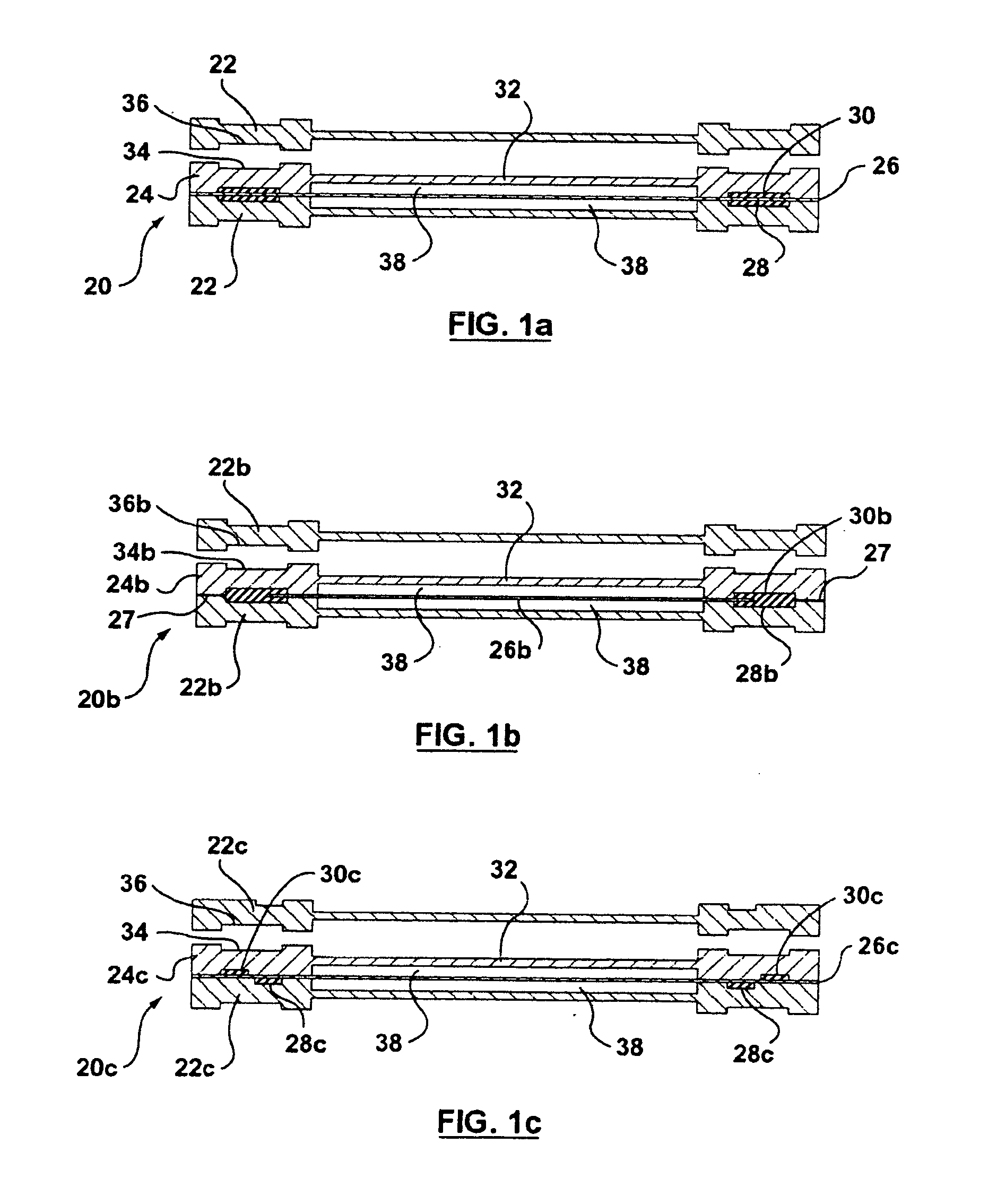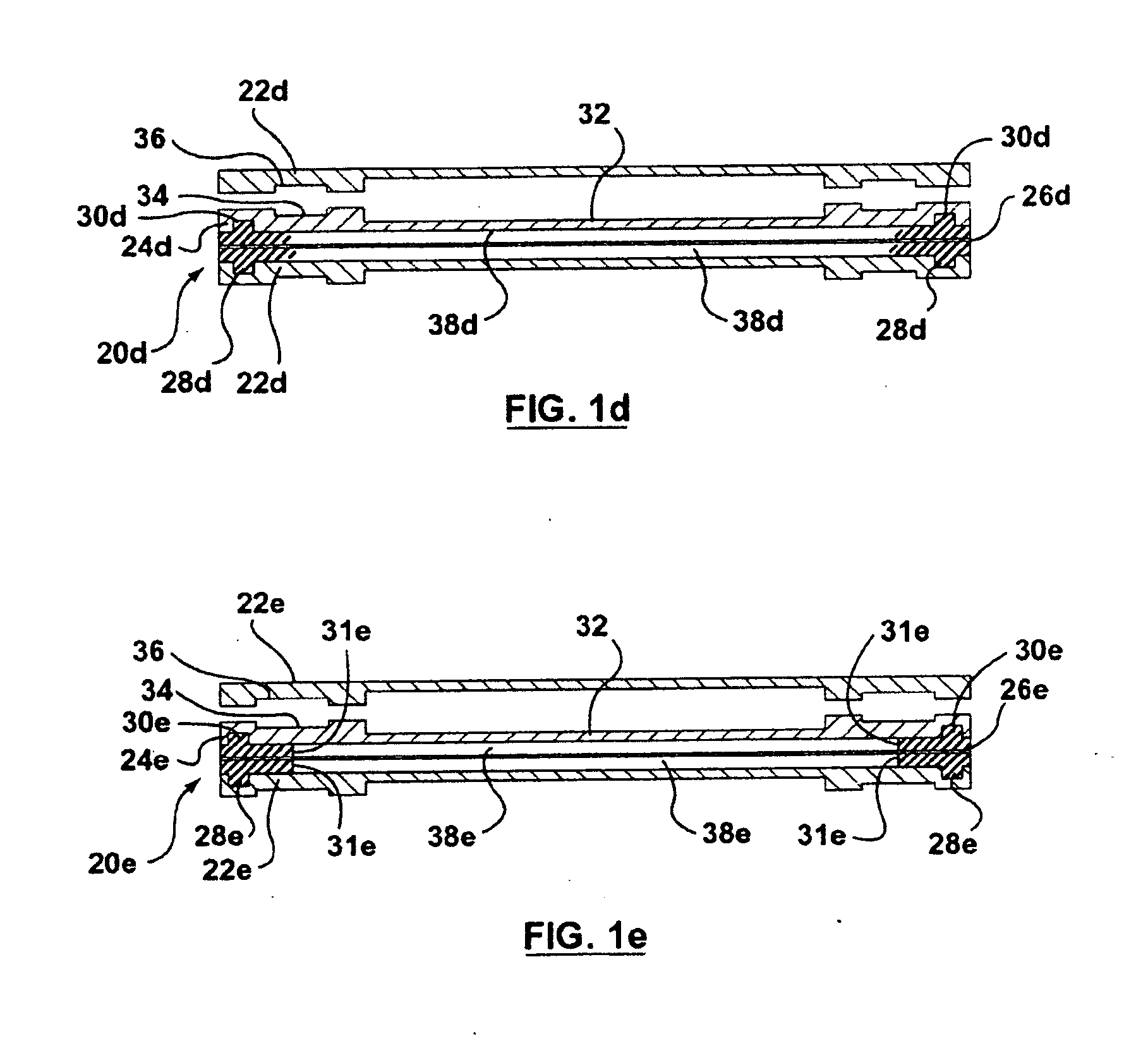Apparatus for and method of forming seals in an electrochemical cell assembly
- Summary
- Abstract
- Description
- Claims
- Application Information
AI Technical Summary
Benefits of technology
Problems solved by technology
Method used
Image
Examples
first embodiment
[0104] the earlier invention is shown in FIG. 1a and indicated generally by the reference 20. For simplicity, this Figure shows just part of a fuel cell stack, as does FIG. 2. It will be understood that the other fuel cells in the stack correspond, and that the fuel cell stack would include conventional end elements, clamping elements and the like. In general, FIGS. 1a-3 are intended to indicate the essential elements of the individual embodiments of the invention, and it will be understood by someone skilled in this art that the fuel cell stacks would be otherwise conventional. Also in FIGS. 1a-e and 2, the proton exchange membrane is shown, for clarity, with exaggerated thickness, and as is known, it has a small thickness. In FIGS. 1a-e, the grooves for the seal material are shown schematically, and it is expected that the grooves will usually have a depth and width that are similar, i.e. a generally square cross-section. Note also that the bottom of the grooves can have any desir...
second embodiment
[0112] Now, in accordance with this second embodiment of the present invention, to provide an additional seal and additional security in sealing, a seal-in-place seal 54 is provided around the entire exterior of the fuel cell stack, as indicated. As for FIG. 1a, conventional ports and openings (not shown) would be provided for flow of gases and coolant to the fuel cell stack. To form this seal, the entire stack would be enclosed and ports and vents are provided to enable seal material to be injected to form the outer seal 54 and all the inner seals simultaneously. For this purpose, communication channels and ducts are provided between the grooves for the seals 52 and the exterior of stack where the seal 54 is formed. As before, once the material has been injected, it is cured at room (ambient) temperature or by heating at an elevated temperature. The final seal material on the surface of the stack will serve two purposes, namely to seal the entire stack, and to electrically insulate...
PUM
| Property | Measurement | Unit |
|---|---|---|
| Fraction | aaaaa | aaaaa |
| Time | aaaaa | aaaaa |
| Angle | aaaaa | aaaaa |
Abstract
Description
Claims
Application Information
 Login to View More
Login to View More - R&D
- Intellectual Property
- Life Sciences
- Materials
- Tech Scout
- Unparalleled Data Quality
- Higher Quality Content
- 60% Fewer Hallucinations
Browse by: Latest US Patents, China's latest patents, Technical Efficacy Thesaurus, Application Domain, Technology Topic, Popular Technical Reports.
© 2025 PatSnap. All rights reserved.Legal|Privacy policy|Modern Slavery Act Transparency Statement|Sitemap|About US| Contact US: help@patsnap.com



